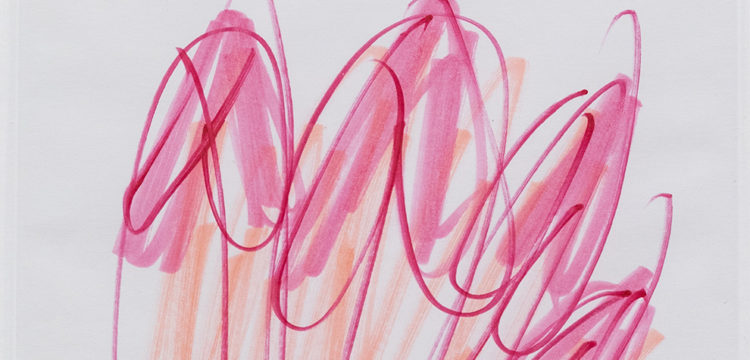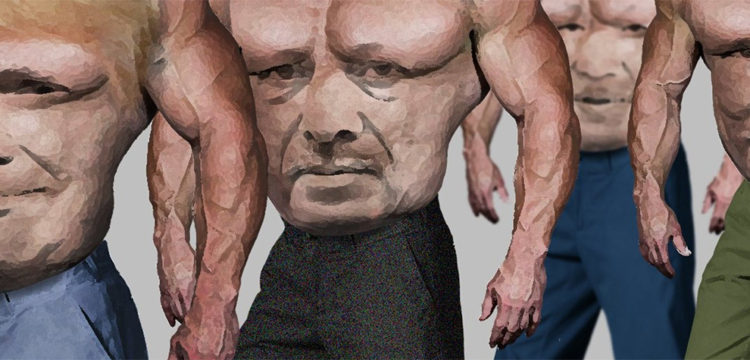Fuori!
Fronte Unitario Omosessuale Rivoluzionario Italiano
Published by NERO and edited by Carlo Antonelli and Francesco Urbano Ragazzi, the volume FUORI!!! makes available to the public the very rare pages of the historic press organ of the Italian Revolutionary Homosexual Unitary Front and the country’s first monthly magazine devoted to sexual revolution.
Some objects act as capsules that contain entire totalities of space and time, able to overcome millennia and explode on full-on blast once they are reactivated. Literature is full of them, so is cinema. History is by far the richest. Crammed into shelves in private homes and kept in the archives of an association in Turin that carries the very same name, there laid stationery, a device in the shape of a magazine, surely still capable of activating something in our present.
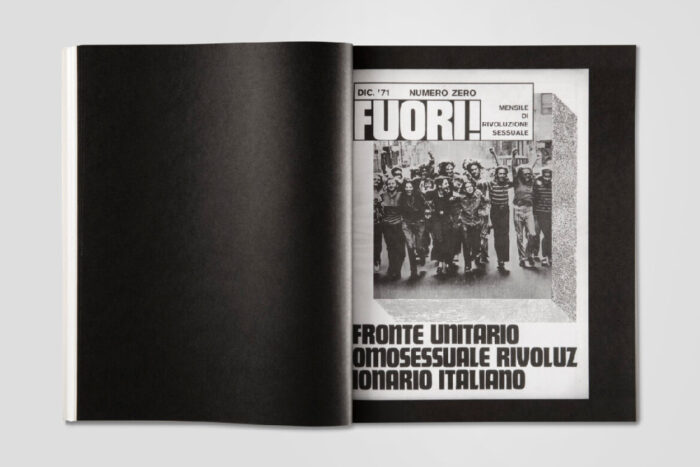
In 1971 in Turin, a group of boys—tired of being beaten up, coming in and out of jail, exasperated by verbal violence and sci-fi medical classifications for imaginary and violent diseases, such as “homosexuality” as a psychiatric form—led by bookseller Angelo Pezzana decided to found the Italian Revolutionary Homosexual Unitary Front, followed by the publication of the homonymous magazine FUORI! A handful of guys actually began to draft the magazine in battuages and cruising areas. Namely Fuori—outdoor, outside, for real. Their engine was rage, along with liberation, breath, coming out. From the urban grooves, the magazine quickly—and successfully—arrived on newsstands, liberating individuals all around Italy. New sections were born influenced by the extra-parliamentary political forces of the time, where a sort of what we used to define as a “faggotting Marxism” (marxismo scheccante) emerged.
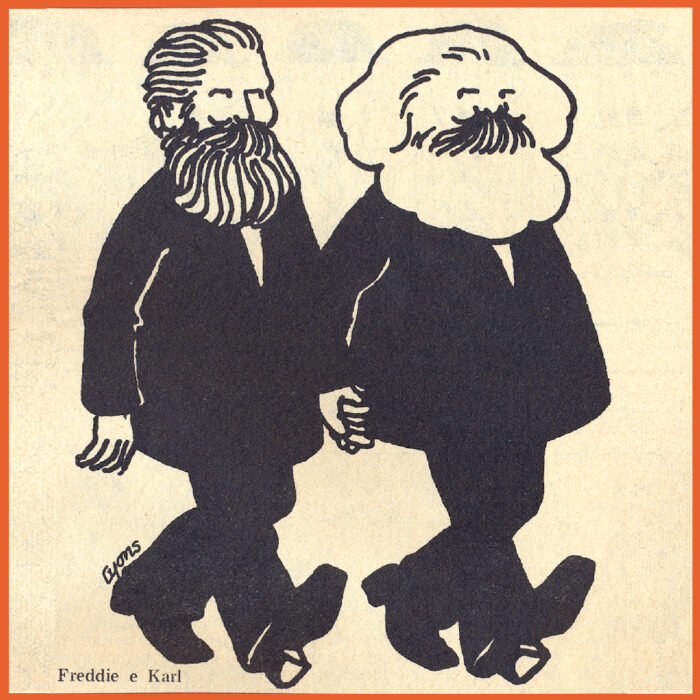
Besides its strength in fighting against those who wanted the end of it, FUORI! was made from scratch and became real and marvelous—while it invented a new extraordinary language, resulting from that time and post-1968, FUORI! was following the path of twins magazines all over the world, and the American Out, although it claimed somehow its own expressiveness, made up of jokes and teasings through the myriads of regional nicknames for “faggots”—frocione, that we all know so well. In short, the magazine took over the gun that was pointed toward the so-called homosexual identity (it would be too complicated here to enter in gender-based terminological issues, so we’ll leave it for next time) and pointed it straight back at the heart of the enemy. Wonderful. FUORI!’s hilarious cartoons and exhilarating advertising posters would make you laugh your head off. To see them today one has to think of those editorial formats with a certain edgy lightness that emerged from the mid-sixties onwards.
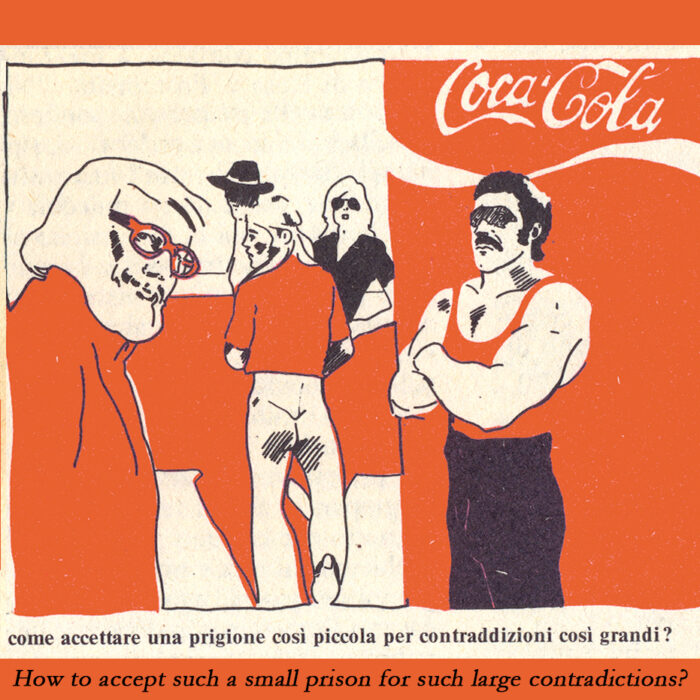
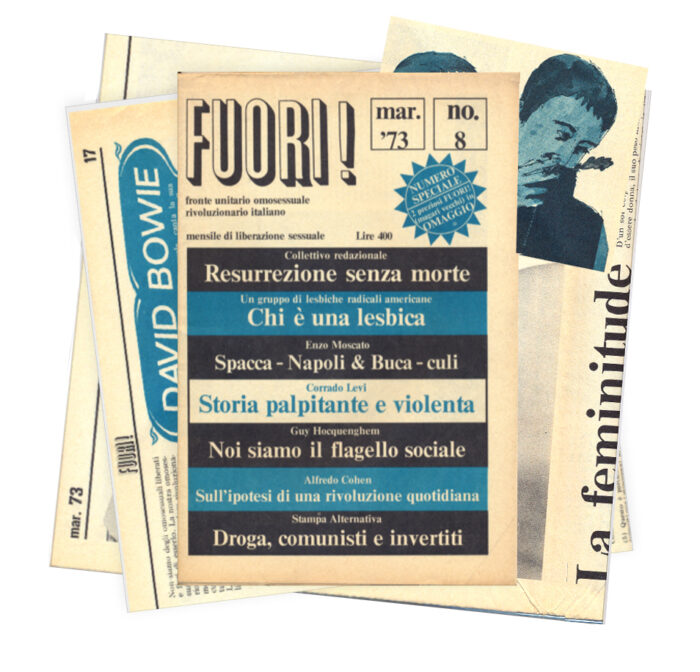
The thirteenth issue was sacrosanctly dedicated to women (Fuori Donna!) and to the lesbian community. From then on, part of the movement—including Pezzana—decided to enter the powerful right-claiming machine of the Radical Party, and the FRONT was consequently split among those who did and didn’t agree, such as Mario Mieli. Also the magazine changed, and this is why we have decided to keep the anthology as a “magic” object, a keepsake and a faithful reproduction of the first legendary aforementioned thirteen issues. It is a deliberately gigantic, very heavy editorial object.
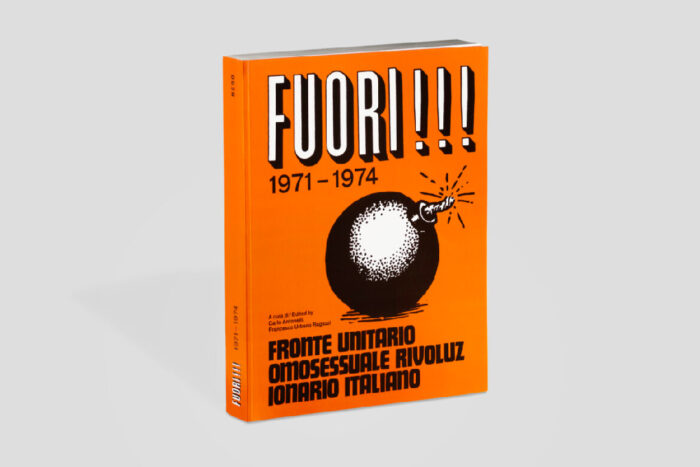
There is a bomb on the cover precisely because we are aware that this is not a nostalgic nor a vintage-chic object, but an incendiary weapon—even physical if you may, because the war is by no means over unfortunately, despite civil unions and other relevant conquests (as we witness in Italy with the DDL Zan, a decree that was meant to pass 50 years ago) still today we cling on the same rhetoric.
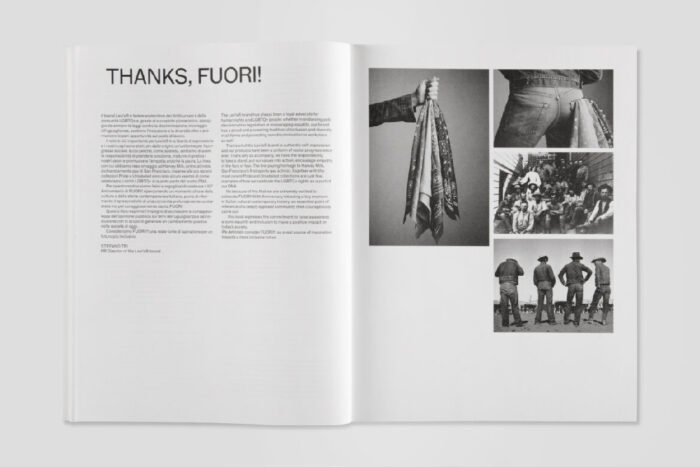
The FUORI! handful bunch believed they could win all the battles they set out to fight. Time now has come for new handfuls of twenty-year-olds to raise their heads and claim even greater rights, beside nominal ones. In this sense, the expressions of stories, tales and extraordinary contributions of intellectuals that the volume contains can act as a match to detonate a civilian bomb that has evidently remained underground eversince.



